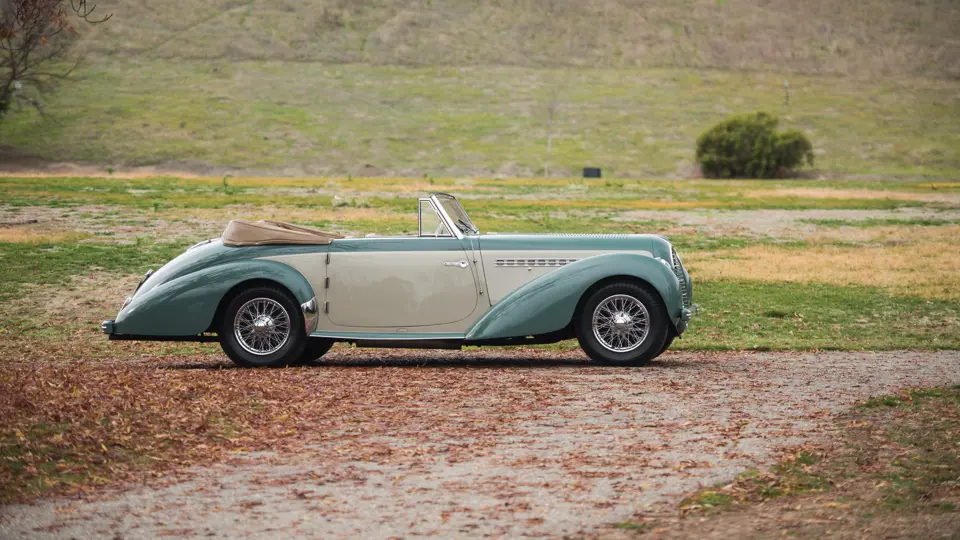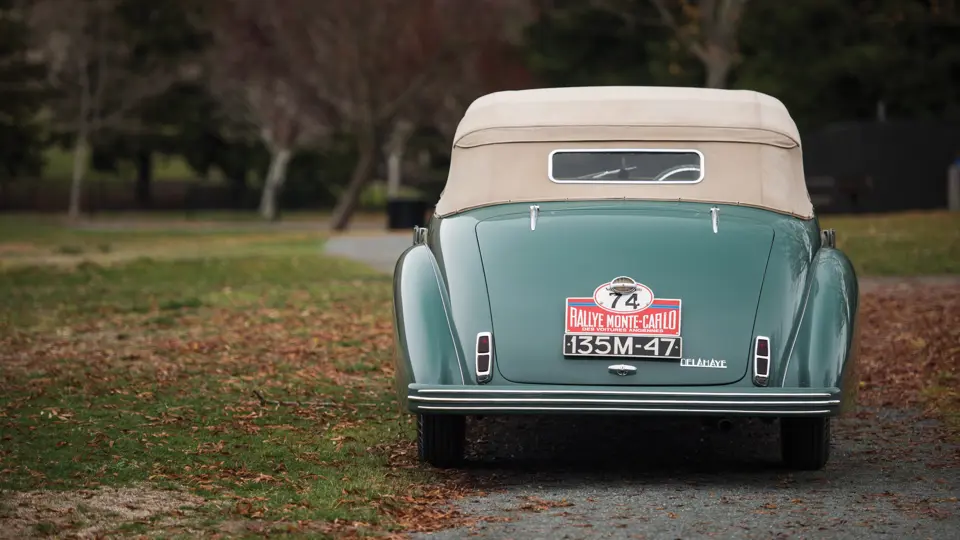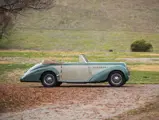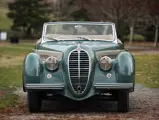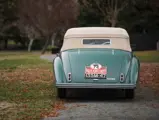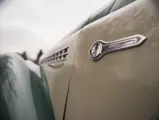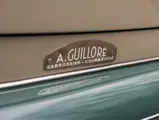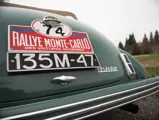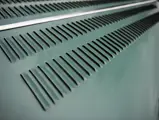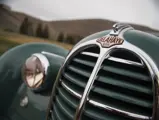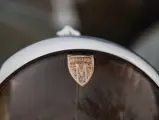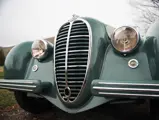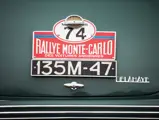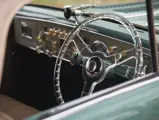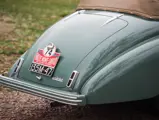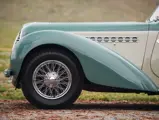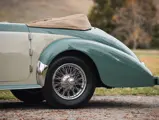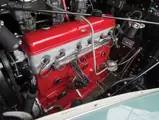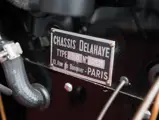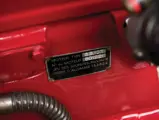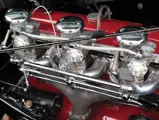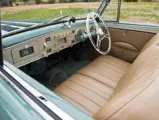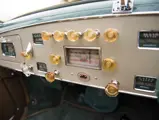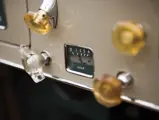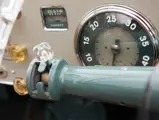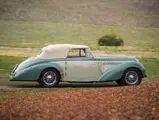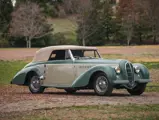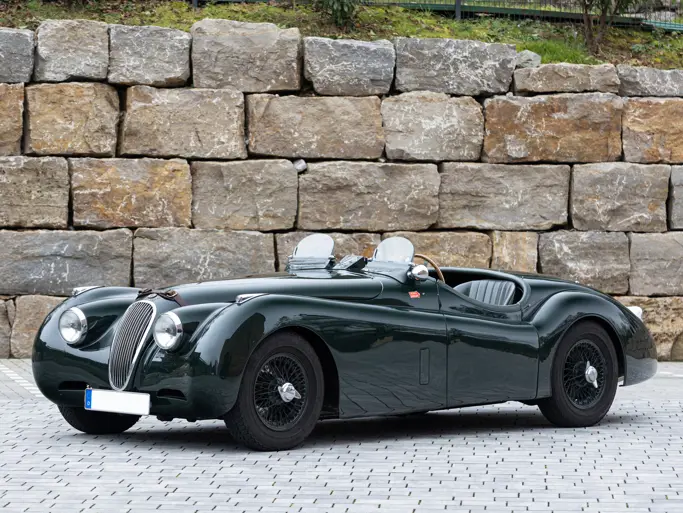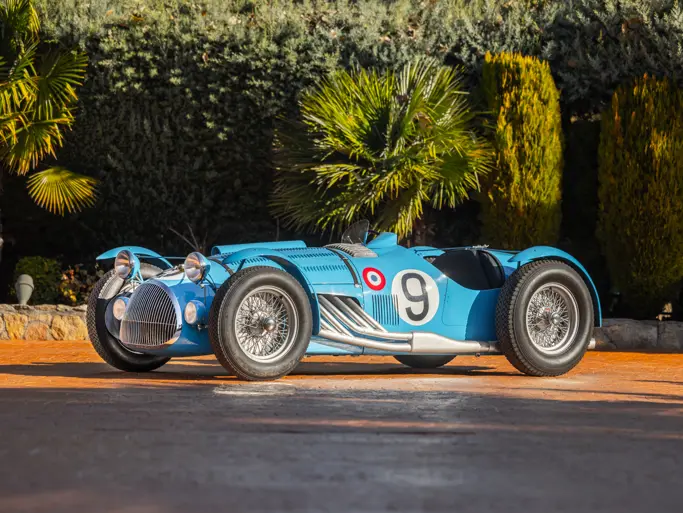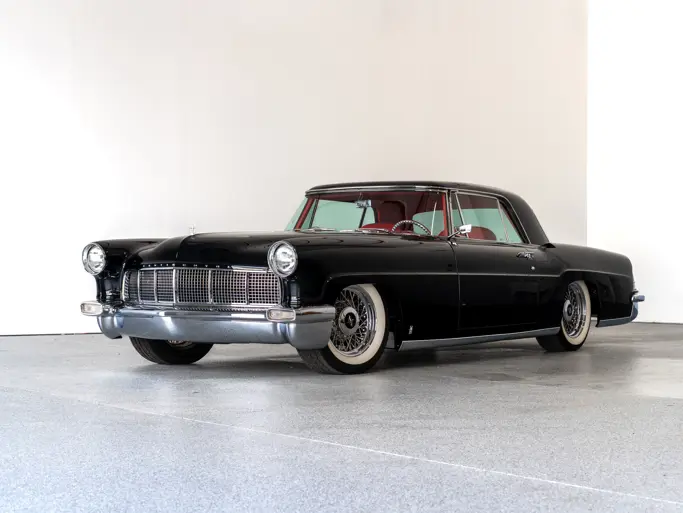
1949 Delahaye 135 M Cabriolet by Guilloré
{{lr.item.text}}
$451,000 USD | Sold
{{bidding.lot.reserveStatusFormatted}}
- Formerly owned by Brooks Stevens and Richard Adatto
- Beautiful older restoration by Mr. Adatto in original colors
- Spectacular interior with Lucite steering wheel and switchgear
- Past Pebble Beach Concours Best in Class winner
115 bhp, 3,557 cc OHV inline six-cylinder engine with three Solex downdraft carburetors, Cotal electro-mechanical four-speed gearbox, independent front suspension with transverse leaf spring, live rear axle with quarter-elliptical springs, and four-wheel mechanical drum brakes. Wheelbase: 114 in.
The Delahaye’s 135, introduced in Paris in 1935, was a rare model that straddled both the pre-war and post-war era. It boasted a brand-new chassis with the same 3.6-liter, six-cylinder engine first seen in the earlier Type 138, and it proved to be a remarkable automobile upon its release. One year later, Delahaye introduced the 135M, which offered a slightly larger engine with improved horsepower and was offered with a choice of single, dual, or triple carburetors. The 135 proved to more than hold its own in competition, as it swept the top six places at Marseilles in 1936. In the following years, leading up to the beginning of the Second World War, the 135 further cemented its reputation, taking 2nd overall at Le Mans in 1937 and 1st, 2nd, and 4th the following year. Outside of Le Mans, Delahaye 135s also took 1st at the Rallye Monte Carlo in 1937 and 1939.
Following the conclusion of the war, production of the Type 135 resumed and continued with the same 3.6-liter engine used before the war. By this time, the company was nearing its end, as the French government had placed large taxes on cars with displacement over three liters. Even today, six decades after the final Delahaye was produced, the famous 135-series cars remain very highly regarded as some of the most compelling French automobiles ever produced.
CHASSIS NUMBER 801221
The lovely cabriolet offered here, 135 M chassis number 801221, was bodied by the renowned Courbevoie-sur-Seine coachbuilder Alphonse Guilloré. Its lovely, subtle lines are the best of French coachbuilding in this era, without being over the top; the curves of the body lines and fenders are set off by a two-tone color scheme, and the details of the hood, stamped with round ventilators set off by delicate strips of chrome, are absolutely delightful. The painted bumpers are typical of French automobiles of this era and recall designs of the period by Saoutchik.
The car’s interior features a steering wheel and switchgear cast of lightweight Lucite. The steering wheel and gearbox switch are clear and jewel-like, while the other switches have an amber tint. Featured notably on show cars by several French coachbuilders of the period, this is an unusual and notably futuristic touch.
The car’s ownership includes the renowned industrial designer and car enthusiast Brooks Stevens, who maintained it at his museum in Mequon, Wisconsin. Stevens offered the car for sale in the early 1980s, and it was acquired at that point by the renowned Delahaye and French coachbuilding historian Richard Adatto. Mr. Adatto performed a complete ground-up restoration of the car to its original condition, including what he recalls were the original colors.
With the restoration completed, the car was brought to the Pebble Beach Concours d’Elegance in 1984 and was awarded Best in Class, placing it into the “winner’s circle.” It was also displayed by Mr. Adatto in Classic Car Club of America judging, achieving Senior badge number 1155 at the annual meeting in 1985. Yet, this was no show queen. Mr. Adatto embarked with it to Europe and completed the Monte Carlo Rallye behind the wheel that same year!
The Delahaye was sold by Mr. Adatto in the early 1990s and has remained in the distinguished collection of its owner since. Its restoration has been well maintained and remains very nice overall, with the soft colors accentuated by a tan cloth top that is in good condition with the exception of some fading and soiling. The pleasing colors are set off nicely by chrome wheels shod with blackwall tires. The interior is nicely mellowed and overall very inviting. The paint shows minor wear typical of a two-decade-old restoration but is overall quite presentable, the area of the right front fender and splash apron being the only incongruous area requiring some refinishing.
This is a lovely French treat for the discerning collector, savored by the great connoisseurs Stevens and Adatto, and restored to a high standard of finish and authenticity.


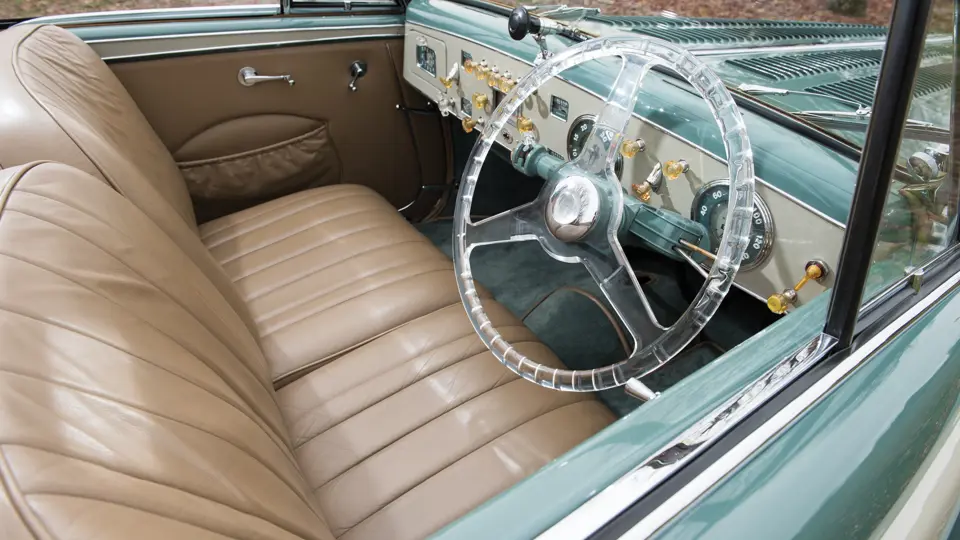

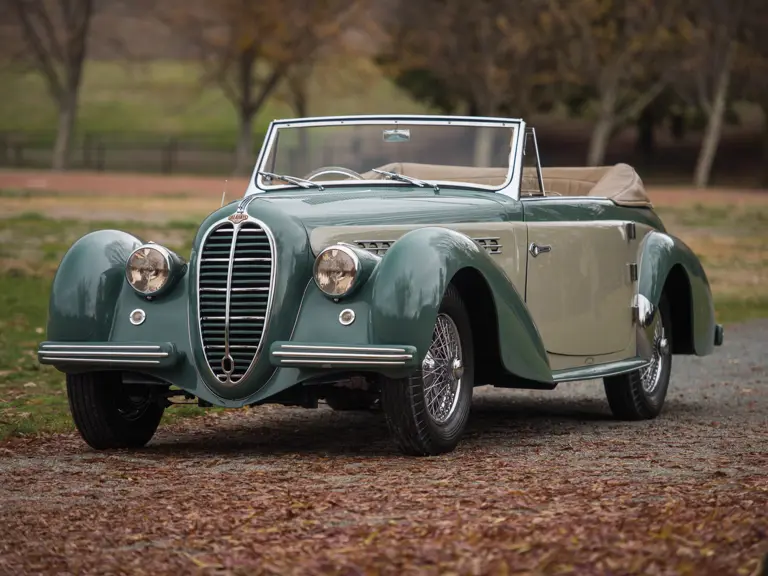
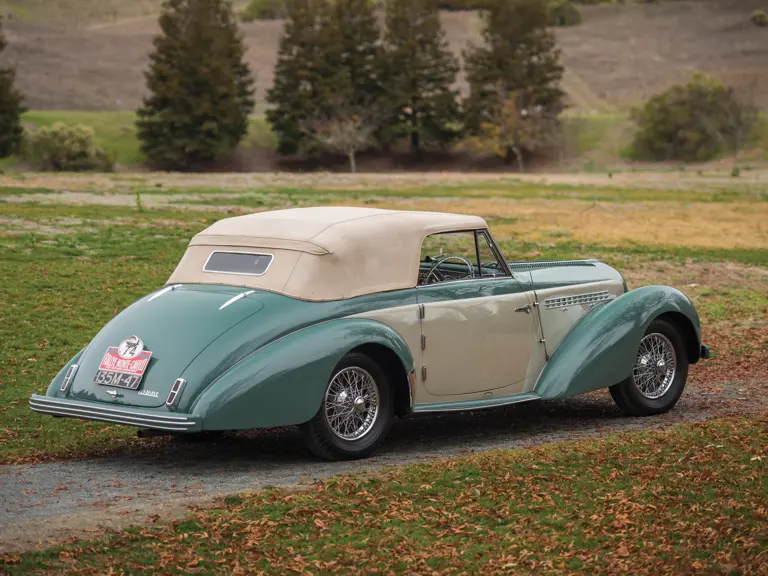
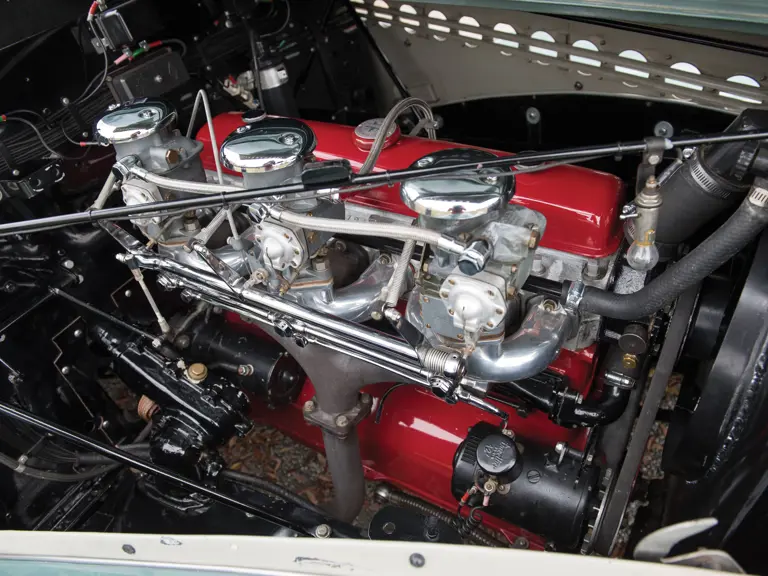
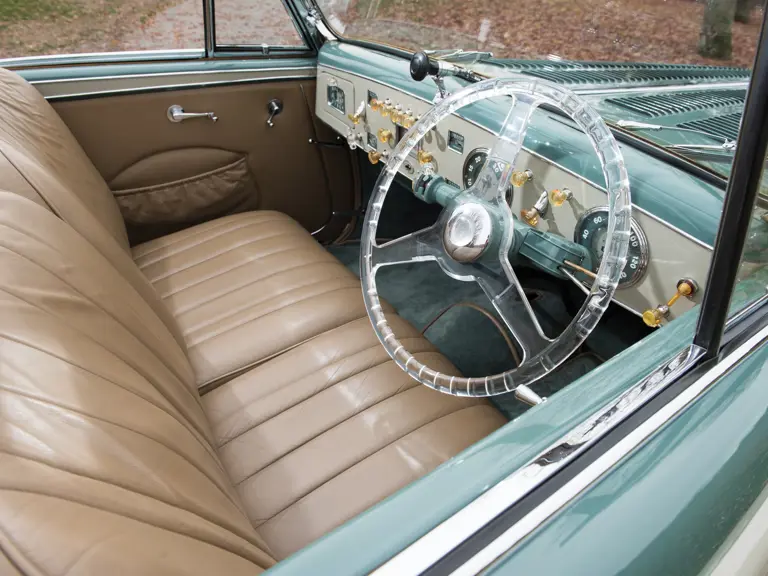
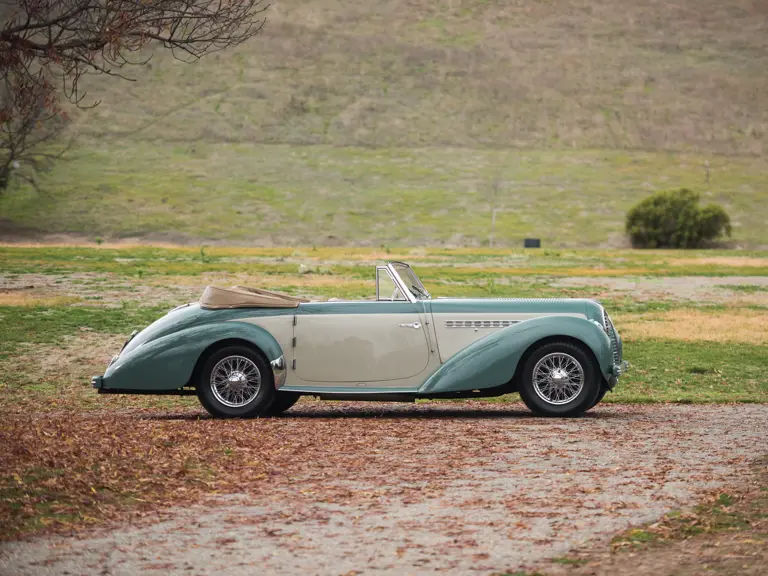
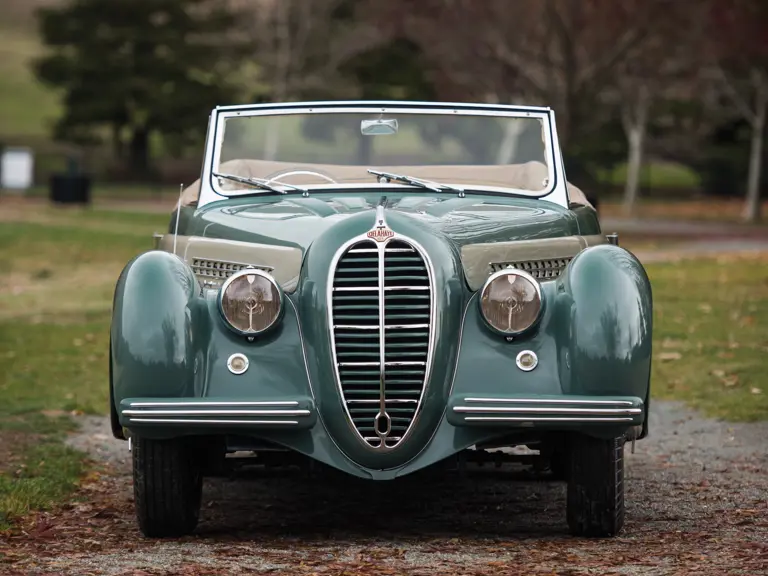
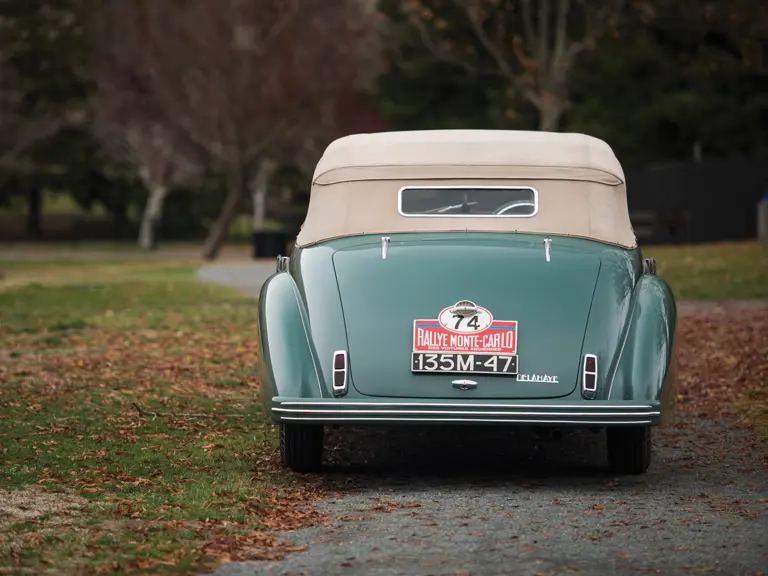
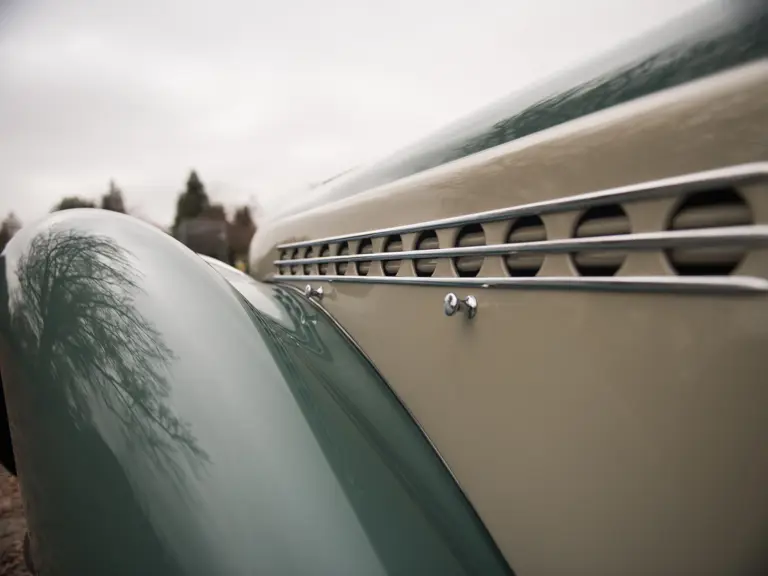


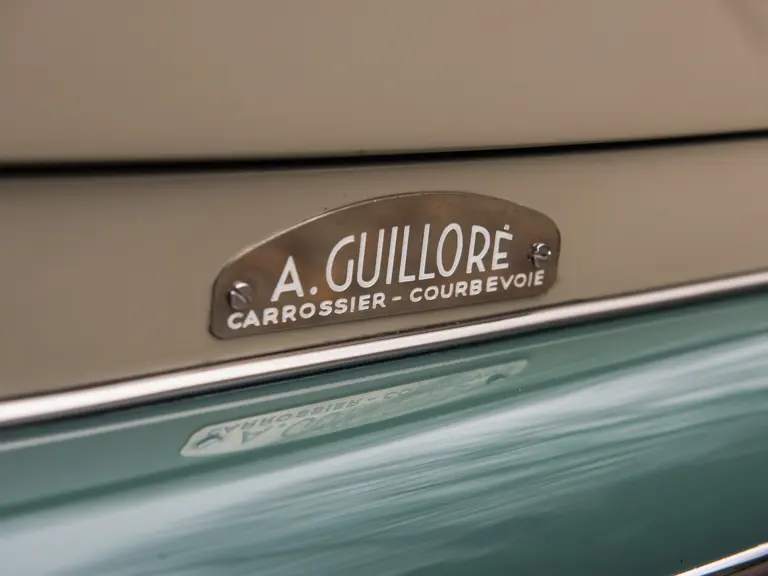
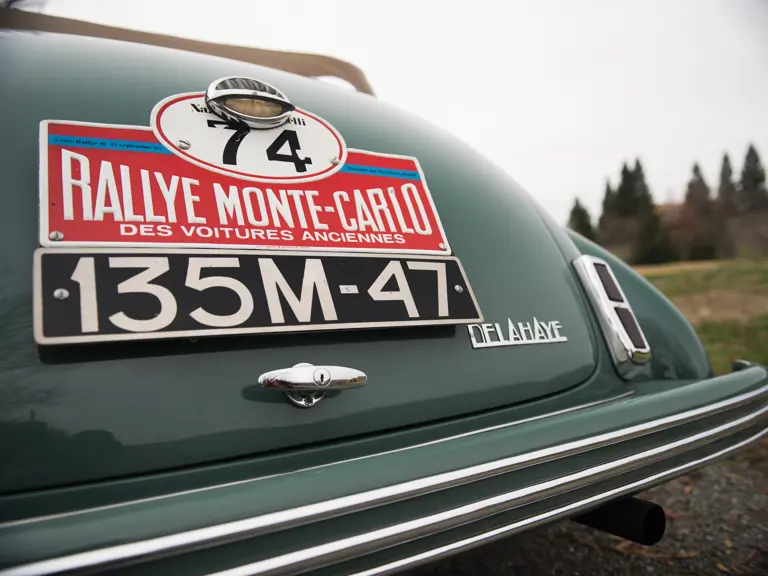
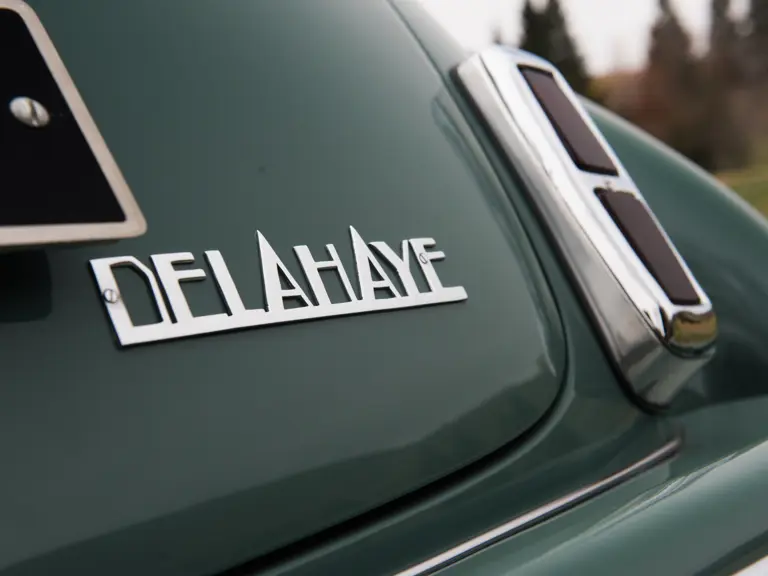
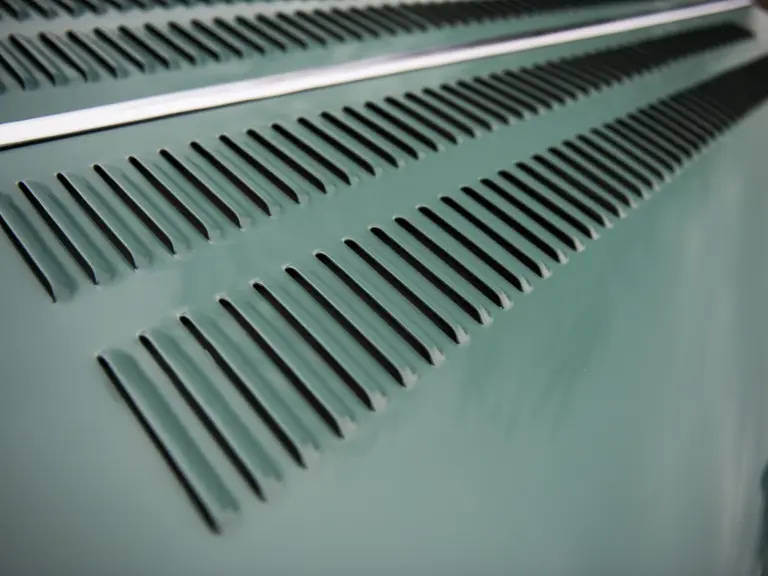

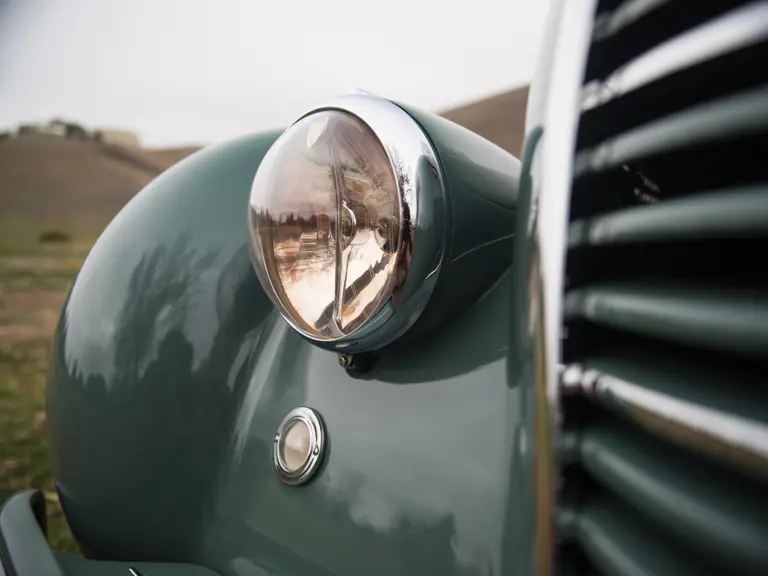
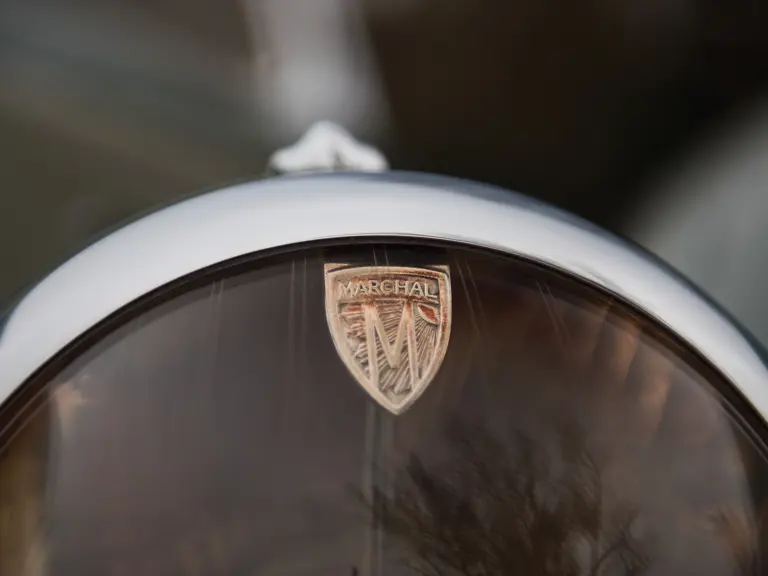
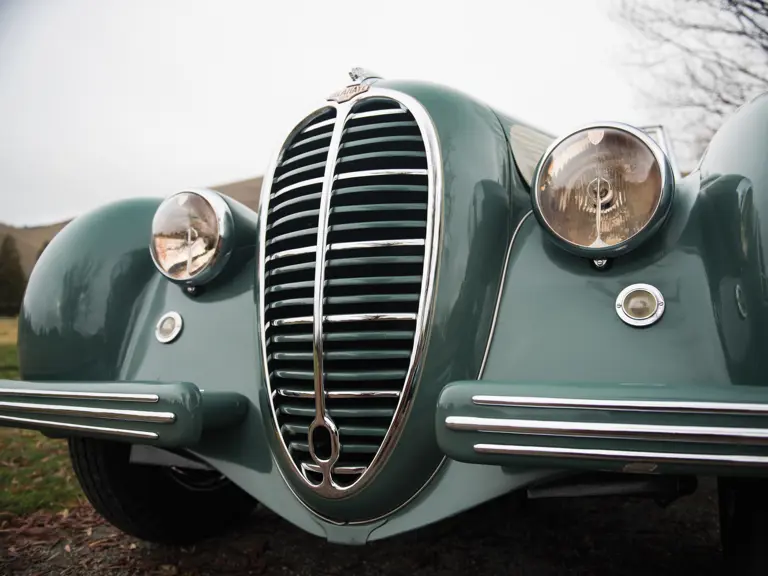
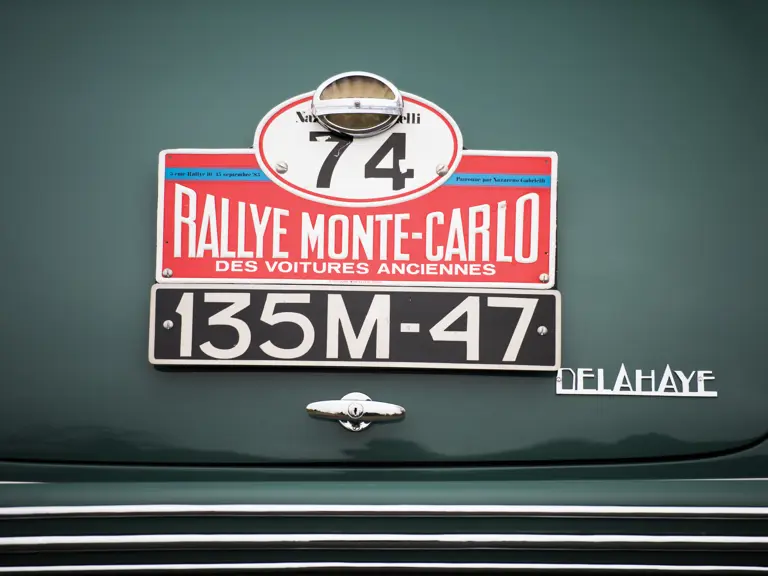
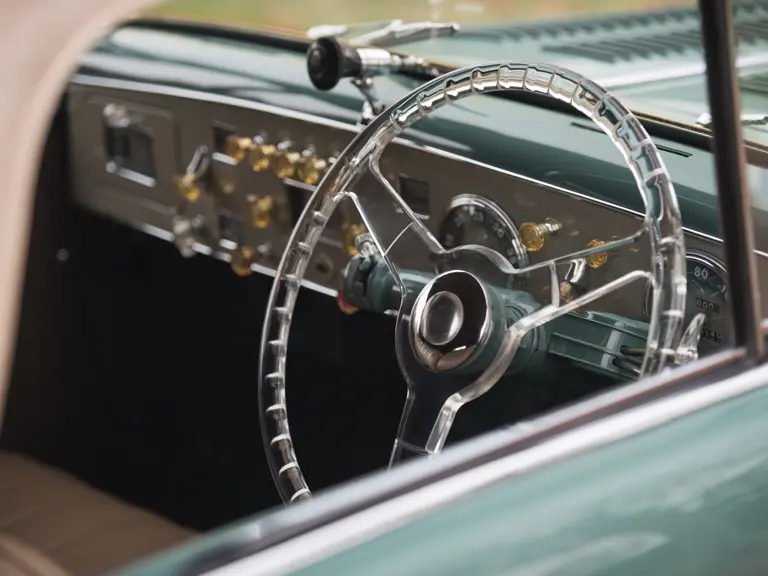
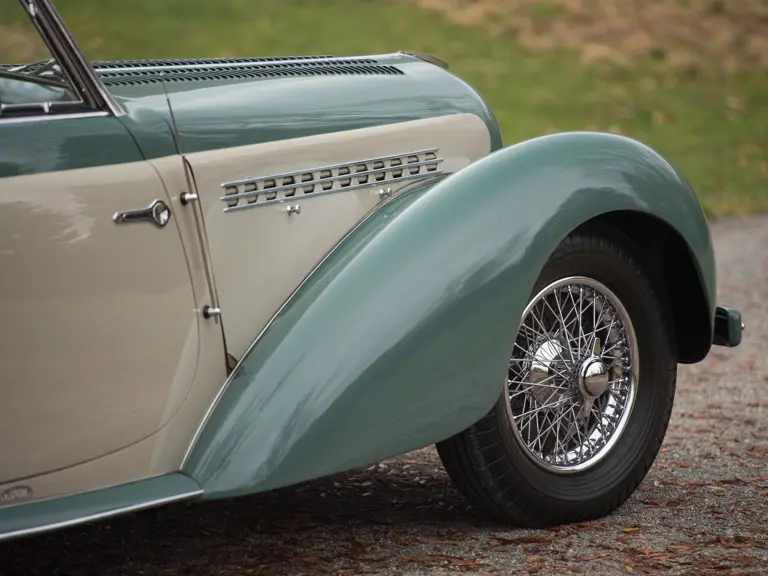
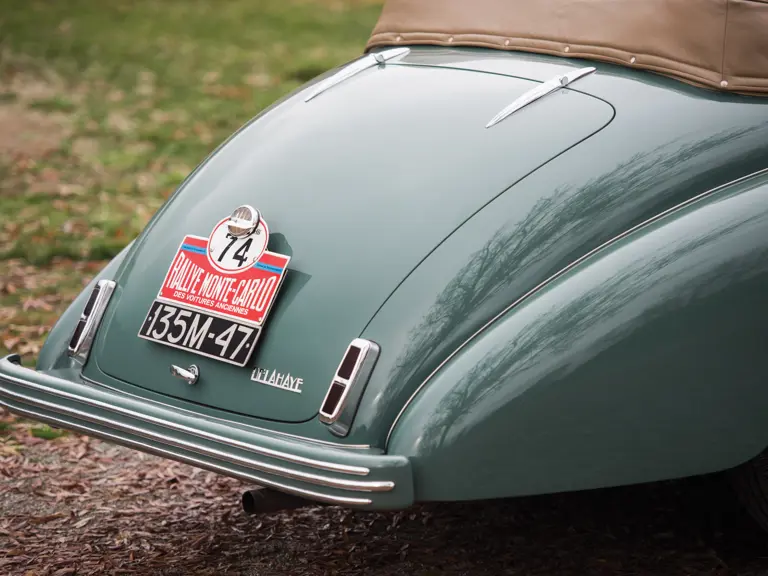
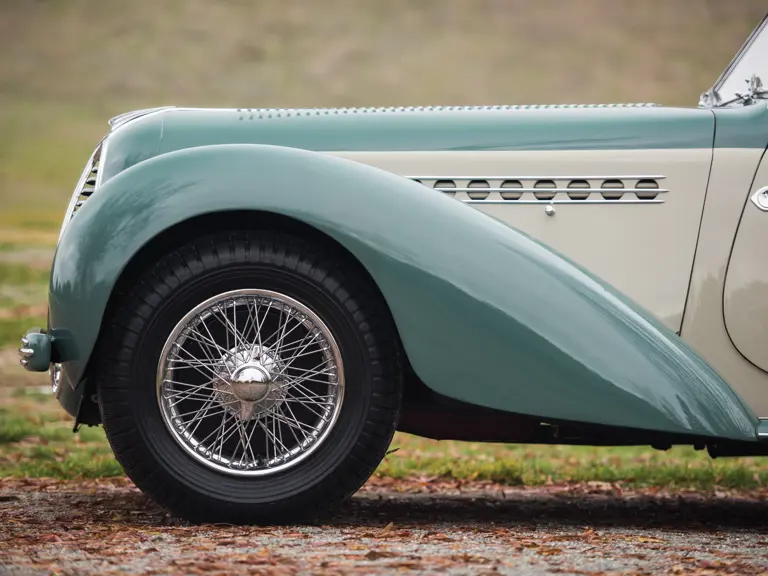

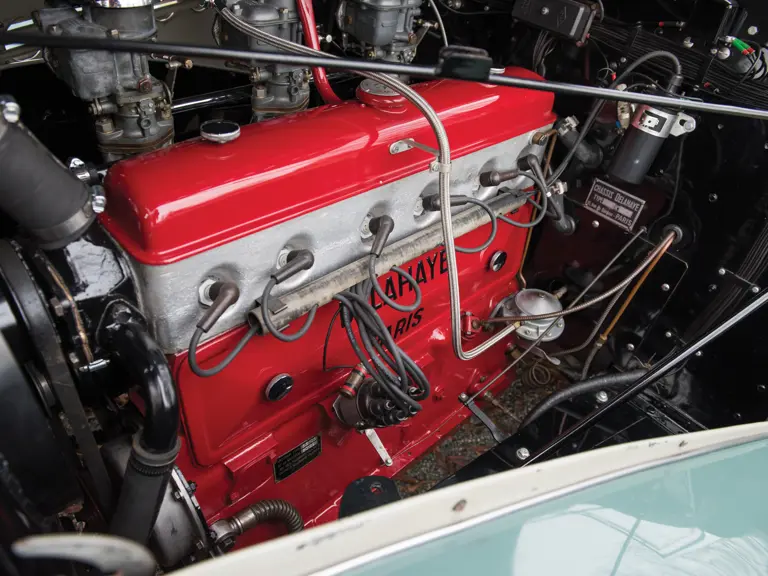
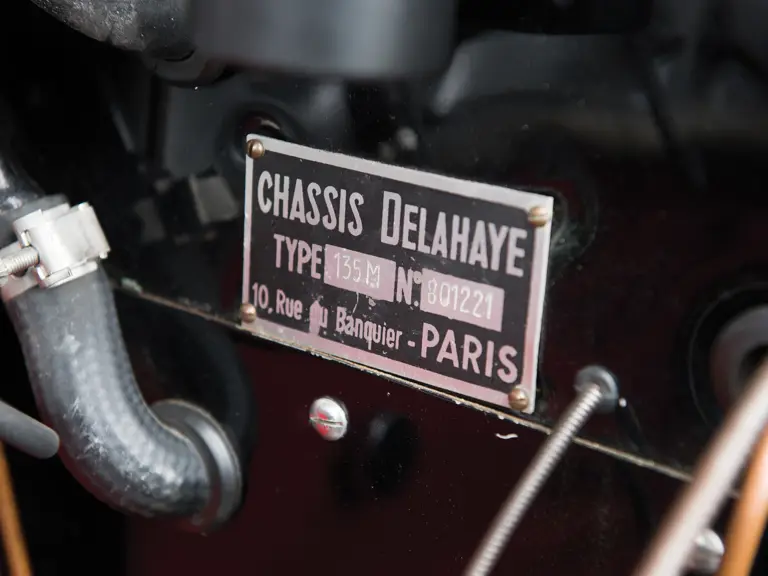
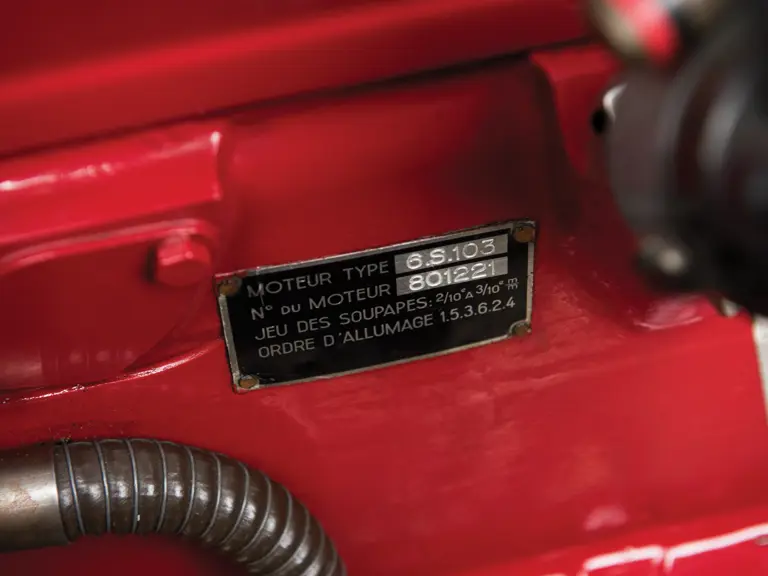
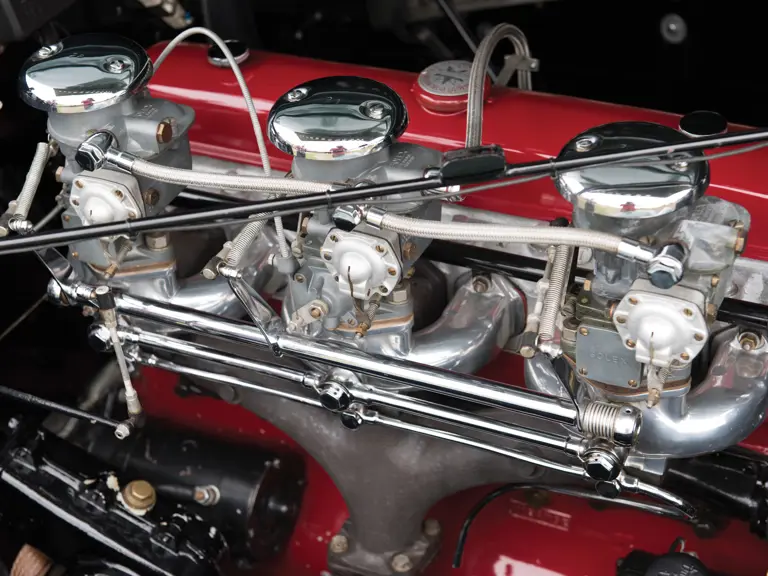
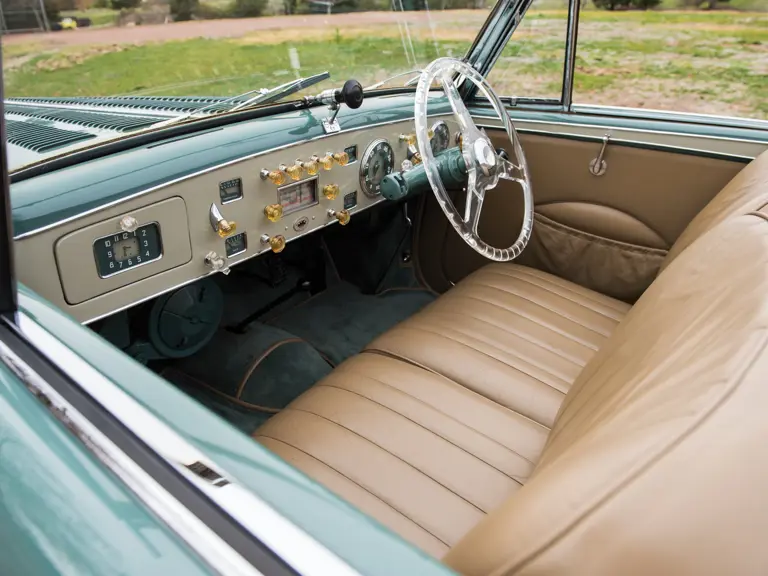
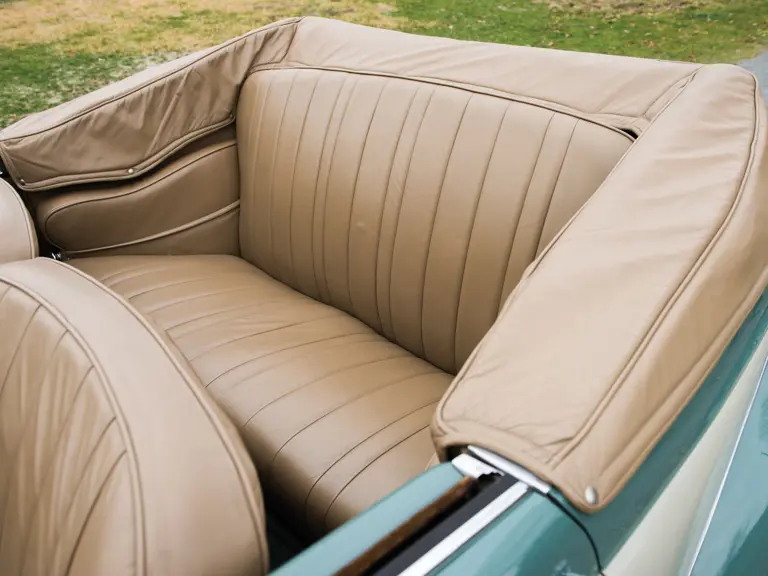

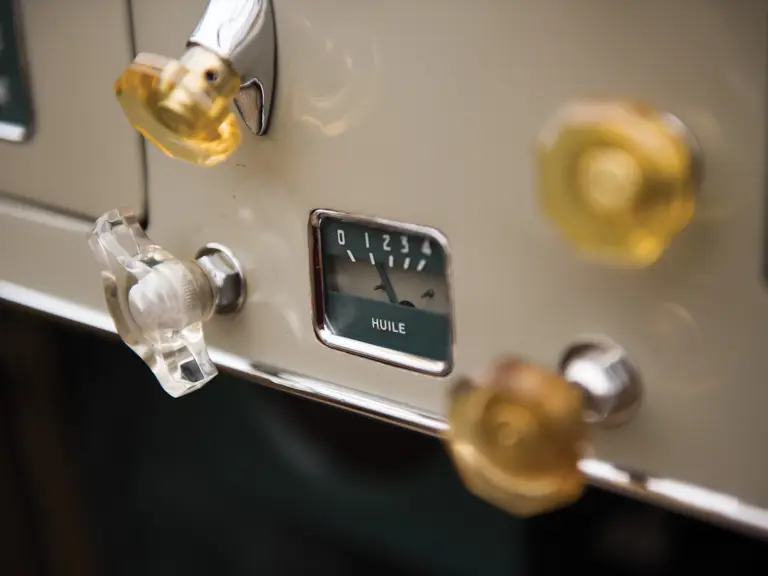

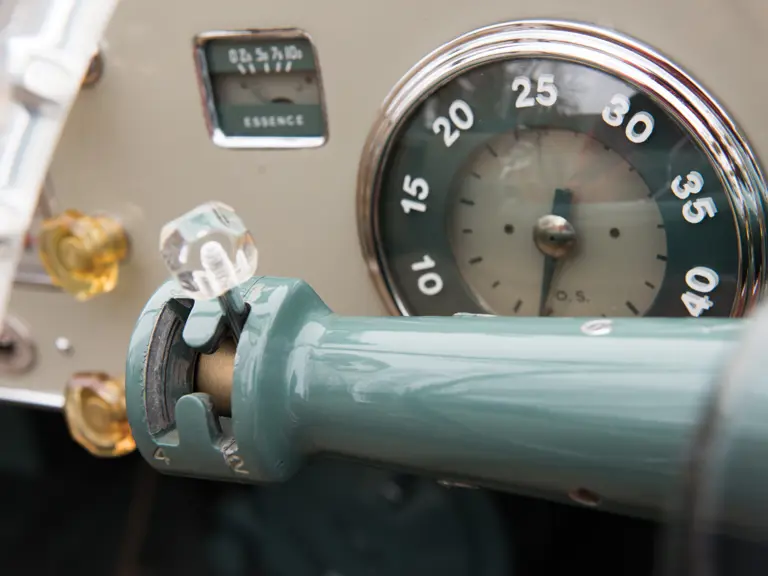
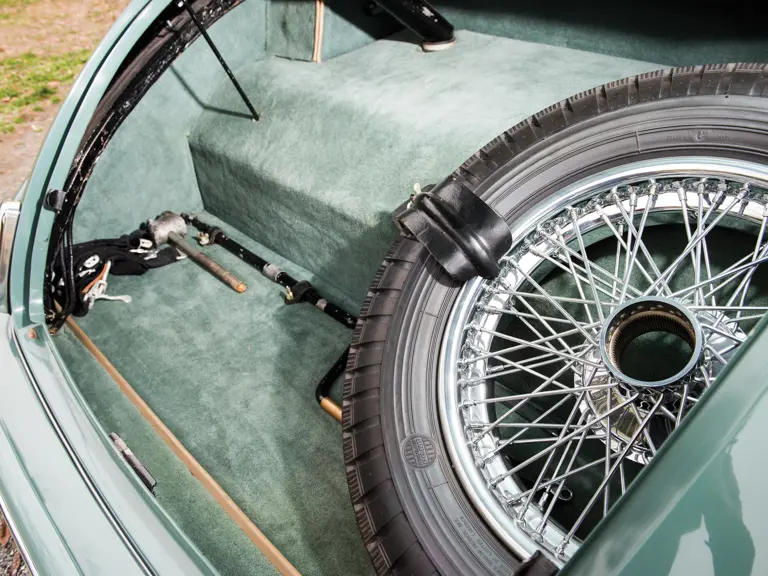
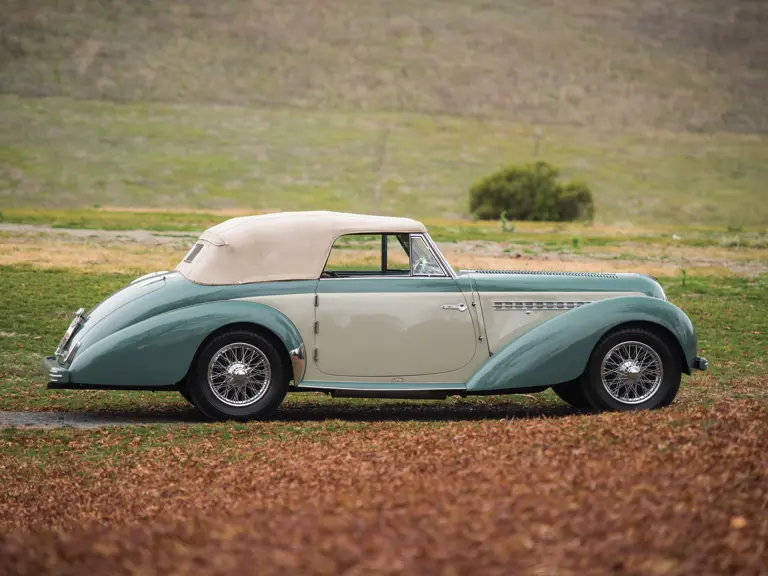
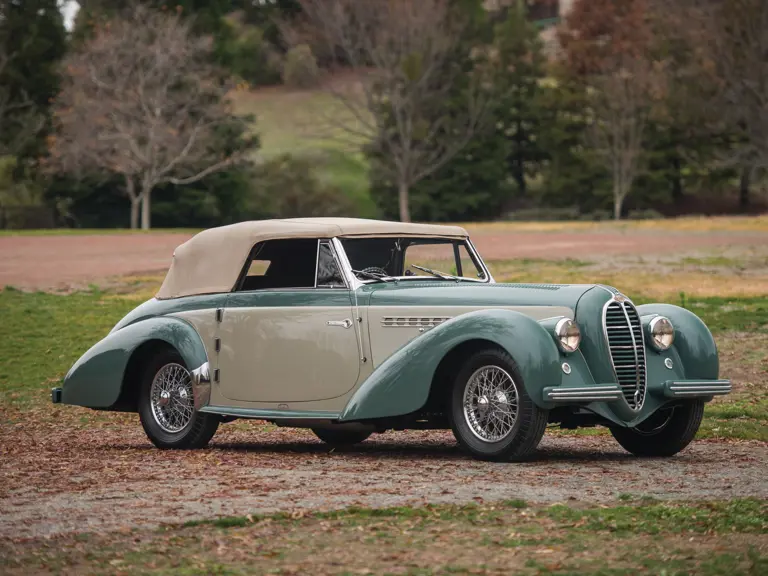
 | Phoenix, Arizona
| Phoenix, Arizona
